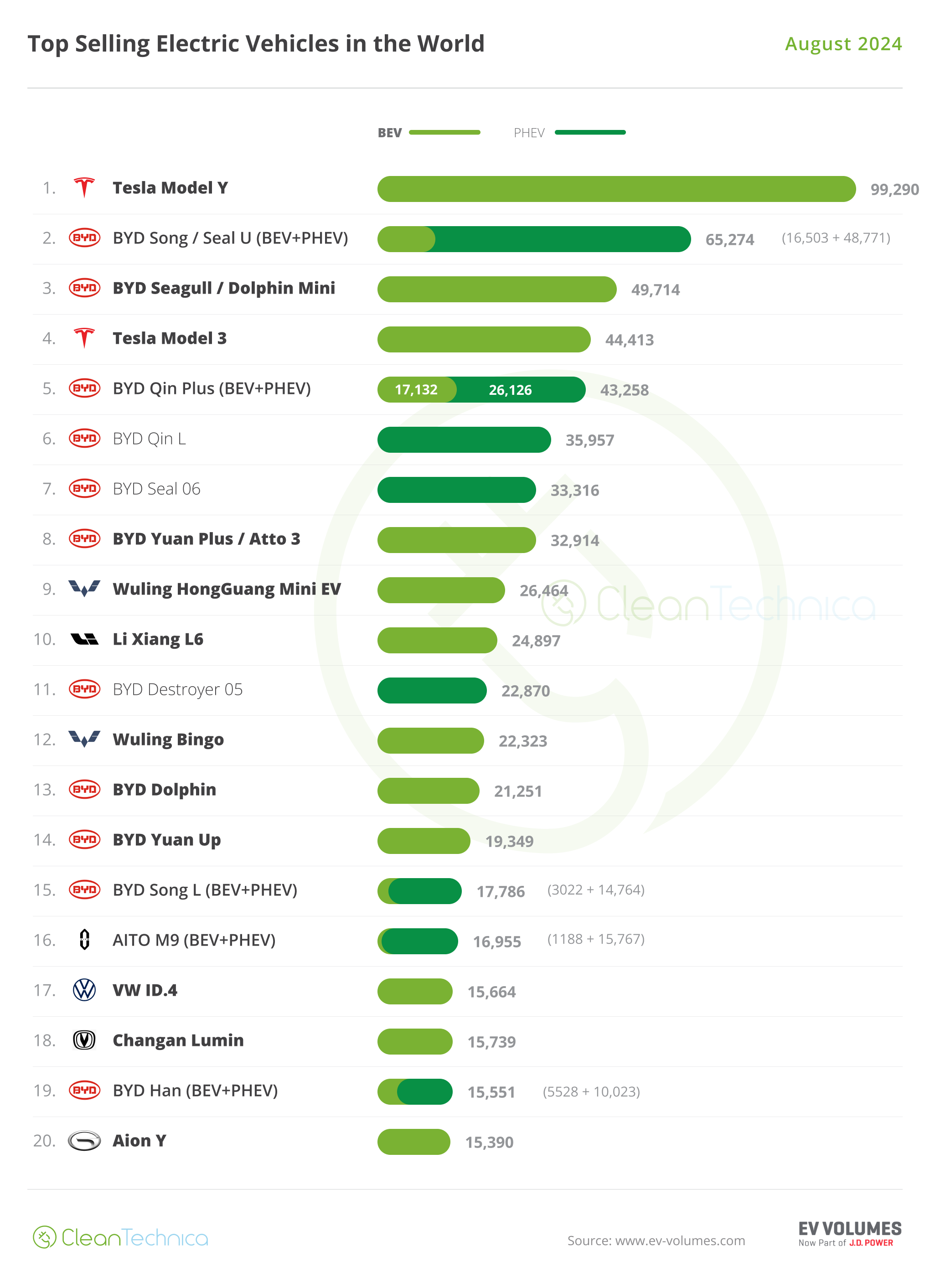Sign up for daily news updates from CleanTechnica on email. Or follow us on Google News!
Regenerative braking is a term many people are unfamiliar with. Basically an electric motor can move a vehicle forward when the driver presses the accelerator pedal, but when the driver lifts off the pedal, instead of coasting along like a conventional car, the motor becomes a generator that creates electricity, slowing the car in the process. This is known as regenerative braking, or regen for short.
Some EV drivers refer to this as one pedal driving, because regenerative braking can actually bring the car to a complete stop during normal driving. That has led to the misconception that electric cars have no brake pedal, which is silly, of course, but people have an almost limitless capacity to invent ridiculous ideas about things they don’t understand. I let a friend who had no prior knowledge of electric cars drive my Chevy Bolt recently. What impressed him the most was the regenerative braking. “That’s a really smart idea,” he said. “They should have started using this in cars 30 years ago.”
Regenerative Braking In Barcelona
Each year in Barcelona, residents and tourists take 440 million trips on its subway system, which includes 165 stations linked by 78 miles of track. Every time a subway train comes to a stop, the energy generated by regenerative braking is converted into electricity, which is then fed through inverters and distributed throughout the subway system. One-third of that electricity is used to help power the trains. The rest provides electricity to power to amenities in the subway stations amenities and energize a growing network of EV chargers.
Transports Metropolitans de Barcelona, or TMB, has installed three inverters so far, and 13 more are in progress. Once they are all in place, it expects regenerative braking to provide 41% of the energy needed to power the trains, a renewable source of energy it says will save about 3.9 metric tons of CO2 emissions annually. Although many cities such as Vienna, Philadelphia, and São Paulo use regenerative braking to some extent, Barcelona is one of the few to use it so extensively, and it is the first to take some of that electricity and use it to power EV charging infrastructure. Utilizing energy that is otherwise lost as heat when a train slows has significantly reduced the transit system’s energy consumption. TMB has also pioneered other energy saving strategies, such as optimizing the settings for Barcelona’s semi-autonomous trains and using AI to optimize the ventilation in each car. Combined, these strategies have reduced the energy needed to operate the Barcelona subway system by more than 10%.
The MetroCHARGE Project
Capturing electricity from regenerative braking is part of a project known as MetroCHARGE. “We’re trying to take advantage of the power that’s already in the metro system and use that spare energy to feed EV chargers on the street,” said Marc Iglesias, head of sustainable mobility at Àrea Metropolitana de Barcelona, a regional agency working with TMB on the project. One such charger is already in operation near the Bellvitge metro station and three more are planned at other locations.
Thanks to the MetroCHARGE program, 33% of the energy used by the subway trains comes from regenerative braking, or enough to power 25 subway stations, said Jordi Picas, who leads the project and is director of metro systems at TMB. In subway systems that don’t deploy regenerative braking, “there’s so much energy that’s not being used, and not only is it lost, it also generates heat that spreads inside the tunnels and increases the temperature,” he said. Since implementing regenerative braking, the temperature in Barcelona’s subway system has decreased by 1.8 degrees Fahrenheit.
Although implementing MetroCHARGE cost about €7.8 million ($8.6 million), TMB expects to recoup its investment in less than five years through energy savings and revenue from the charging stations, according to Grist. Drivers who use one of the electrolineras — Spanish for “electric gas stations” — pay about 33 cents per kilowatt-hour for the electricity that recharges their batteries during a charging session. That is a relative bargain compared to the cost of electricity at many Level 3 EV chargers today, which can be as high as $0.80 per kWh or more.
Discovering Regenerative Braking In Other World Cities
Metro systems worldwide already have the electric infrastructure needed to adopt this approach, but not all of them use trains outfitted with regenerative braking. Retrofitting older trains with the new technology would be expensive, Picas said. All of Barcelona’s trains have featured the technology since the 1980s. Given that a single train costs about $6.6 million and has an average lifespan of 35 to 45 years, it’s essential that transit operators include them in their medium and long term planning, he said. There are other challenges beyond cost, like finding optimal spots for the inverters and charging stations in a dense metropolitan area. “The hardest challenge was reaching an agreement with the various city halls to get access to the public space to set up the chargers,” said Picas.
Other cities have expressed an interest in replicating MetroCHARGE. TMB recently met with a delegation from New Delhi and has shared information with officials from Vienna as well as an international consortium of 45 transit systems called The Community of Metros Benchmarking Group. Cities like New York, which has the world’s fifth-largest metro system, with 472 stations and 665 miles of track, could see significant energy savings from regenerative braking due to the sheer scale of its subway network, said Ahmed Mohamed, director of graduate studies at the Department of Electrical Engineering at the City College of New York.
In a 2018 study, Mohamed and his team found that the Metropolitan Transit Authority, which runs New York’s subways, could cut its energy consumption by 35% if it adopted regenerative braking system-wide and used the electricity it generates to power trains and station amenities. As of 2022, just half of the city’s trains use the technology, according to the New York State Energy Research and Development Authority. All new trains are required to have regenerative braking technology, but “there’s not necessarily a strategic plan for how they can be used for energy saving,” Mohamed said. He added that the MTA favors regenerative braking because it requires less maintenance than conventional friction brakes, a consideration that many electric car drivers have come to appreciate, as the cost of brake jobs has been virtually eliminated from their maintenance budgets.
One of the main barriers to implementing regenerative braking is the lack of data outlining just how much energy, and therefore money, might be saved with its adoption, Mohamed said. “When you’re not quite sure about the savings, it’s hard to run a cost-benefit analysis, so decision making is not very easy. It’s important to fund pilot projects to get the real numbers.” Learning from projects like MetroCHARGE could help other cities understand the benefits of regenerative braking, he said. Improved modeling and encouraging transit systems to share the details of their systems so others may learn from them would help as well.
The Takeaway
Ten years ago, few people knew what regenerative braking was. Today, many are realizing it is an important technology and that not using it is like leaving money on the table. In theory the technology is simple — take kinetic energy and turn it into potential energy instead of wasting it as heat. In practice, it is a fairly complex process but well worth the effort. There is a lot of energy that can be harvested from the subway trains that rumble night and day under the streets of the world’s major cities. Part of being good stewards of the Earth going forward means capturing some of that energy and putting it to productive use. Wasting perfectly good energy is never a smart idea.

Have a tip for CleanTechnica? Want to advertise? Want to suggest a guest for our CleanTech Talk podcast? Contact us here.
Latest CleanTechnica.TV Videos
CleanTechnica uses affiliate links. See our policy here.
CleanTechnica’s Comment Policy





